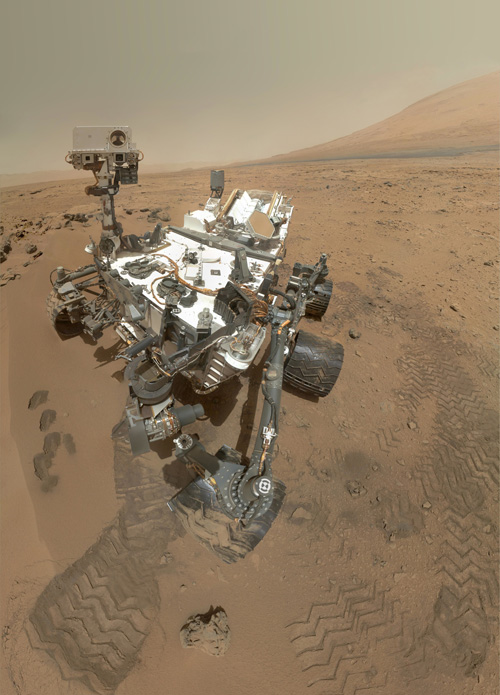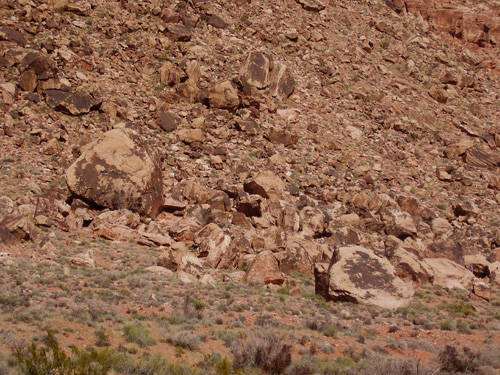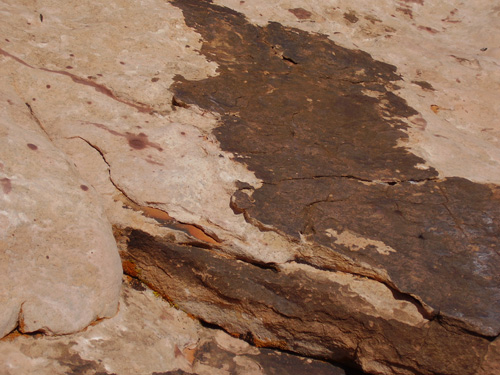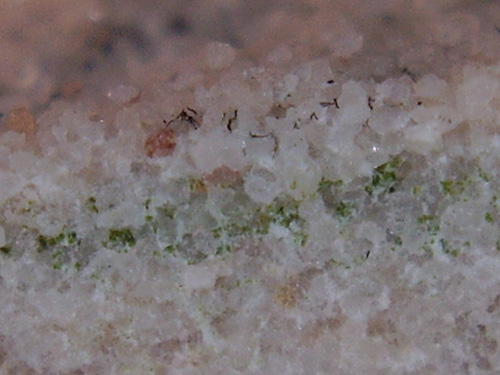UA engineers have turned an off-the-shelf digital camera into an imaging device that could be key in the search for life forms on other planets.
The next time a NASA rover blasts off to explore Mars or some other planet, it might be equipped with a new type of “do-it-all” camera developed by an engineering team at the University of Arizona.
The prototype of the “Astrobiological Imager” – described in a research paper featured on the cover of a recent issue of the journal Astrobiology – consists of an off-the-shelf digital point-and-shoot camera with some surprisingly simple modifications. A slightly more sophisticated version, mounted on a rover, could do what even NASA’s latest and greatest Mars rover, Curiosity, can’t: identify, photograph and even analyze patches of soil or rocks from afar and in extreme close-up, all with the same camera.
The team figured out how to take advantage of different lens adapters that can be mounted in front of a single camera to enable it to take images ranging from a macroscopic scale – think landscape – all the way down to a microscopic scale – think cells and bacteria – thus spanning at least six orders of magnitude.

Mounted on a rover like NASA’s Curiosity, the Astrobiological Imager could someday help identify promising spots to search for traces of life. Unlike existing imagers, the prototype developed by the UA-led team can photograph things close up and far away. (Photo credit: NASA)
“For each scale, there is of course one or even several imagers that are superior to our instrument for that particular scale,” said Wolfgang Fink, an associate professor in the UA Department of Electrical and Computer Engineering who led the project. “However, there is no instrument out there that can go across several orders of magnitude.”
Fink explained: “Think of the world’s best decathlete as opposed to the world record holders in each individual discipline. That’s the best analogy. Our camera is the best decathlete.”

The prototype of the Astrobiological Imager consists of an off-the-shelf digital camera with modifications such as LEDs, which would allow for spectral analyses of rock samples. (Photo credit: Wolfgang Fink)
Fink who holds joint appointments in the UA departments of Biomedical Engineering, Systems and Industrial Engineering, Aerospace and Mechanical Engineering and Ophthalmology and Vision Science.
For example, HiRISE, the UA-led High Resolution Imaging Science Experiment instrument aboard NASA’s Mars Reconnaissance Orbiter, has imaged the Red Planet in unprecedented detail. But as a space-borne instrument, it can only resolve features about the size of a kitchen table and is not capable of microscopic imaging. If the table were set with plates or anything smaller, HiRISE wouldn’t know.
The Astrobiological Imager, on the other hand, could image the table from far away, then move closer to take detailed shots of the dinnerware, and finally zoom in to take high-resolution pictures of a single salt crystal left on one of the plates.

Testing the imager in the Mojave Desert, Fink and his collaborators were able to simulate what a rover exploring a foreign planet would do: First, image the environment from afar to allow scientists to select a promising site for closer study. (Photo credit: Wolfgang Fink)
For the prototype, Fink and his team modified an $85 point-and-shoot camera with parts adding up to less than $100. Mounted on the camera lens is an adapter ring with a special lens that shortens the camera’s minimal focal distance so it can be directly placed on the object and still use its built-in autofocus.
“With the newest generation of digital cameras and their better lenses, you can get down to the limit of what is optically resolvable,” Fink said. “In the time since the prototype was assembled, imaging sensors have become smaller and have more densely packed pixels. With a 20-megapixel camera modified in this way, we could get down to a few hundred nanometers. In other words, the optical limit of a light microscope.”
The idea, according to Fink and his collaborators, is to enable a robotic rover exploring another planet with the imaging capabilities of a field biologist on Earth: a pair of eyes, binoculars, a hand lens, a dissecting microscope and a light microscope.

The rover would then home in on a feature: for example, interesting-looking rock surfaces that might harbor microbes. (Photo credit: Wolfgang Fink)
“The idea is contextual imaging,” Fink explained, “to subsequently zoom in on areas of interest in a nested fashion, until you hit the sweet spot, which you want to image microscopically. For example, to find microbial communities in rock formations.”
“Mounted on a rover, our camera would be equipped with a rotating turret containing different adapter lenses,” Fink explained. “From an astrobiological point of view, you need the context first, so we’d use it in wide-angle mode to look around in search for promising targets, then drive to, say, a rock pile, image individual rocks, then go close to image patches potentially containing life, and then zoom in to produce a microscopic image of anything that might be living on or beneath that rock surface.”
In this fashion, Fink and his team tested their Astrobiological Imager in the Mojave Desert, using it to photograph sandstone outcroppings and scan them for promising patches indicating microbe colonies on the rocks. Moving in closer, they used it to image the growth up close, revealing the close relationship between sand grains and biomass. The team was able to microscopically image a microbial colony living beneath a rock surface.

Finally, the same imager would be used to take pictures on a microscopic level. Here, the modified camera revealed green biomass thriving between mineral grains in a rock. (Photo credit: Wolfgang Fink)
Equipped with a device that blocks stray light, the imager could use built-in LEDs emitting well-defined light and analyze the reflected light, which would allow researchers to perform a spectral analysis of the sample and get an idea of its chemical composition. Fink is convinced that we will see more multipurpose instruments like the Astrobiological Imager in upcoming space missions. The underlying technology of the adapter-based imaging capability is patented.
“In principle, our imager could be used on a mission like the OSIRIS-REx asteroid sample return mission, which is also led by the UA, but too far along obviously,” he said. “NASA is going toward multiuse instruments wherever possible, and they have to work more in tandem with each other. Our prototype fulfills those requirements.”
The co-authors of the study are Henry J. Sun and the Desert Research Institute in Las Vegas, William C. Mahaney, Quaternary Surveys in Thornhill, Ontario, Canada, Kimberly R. Kuhlman at the Planetary Science Institute in Tucson, Ariz., and Dirk Schulze-Makuch, at Washington State University in Pullman, Wash.
– By Daniel Stolte
*Source: The University of Arizona
